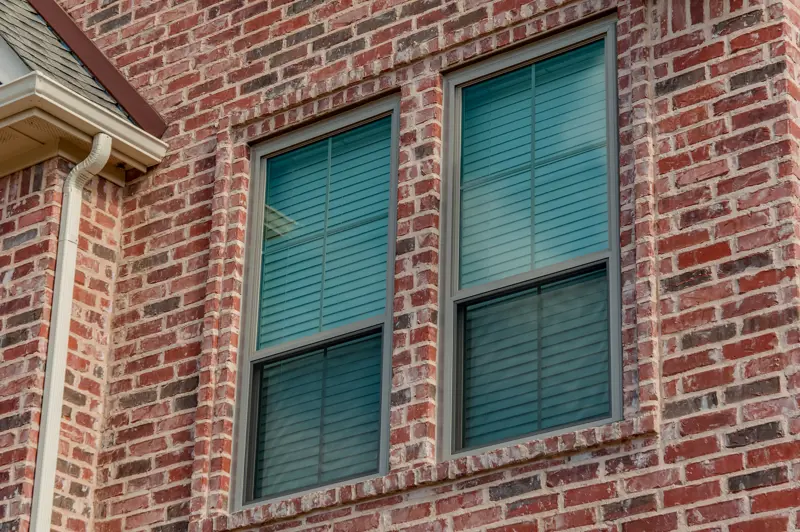
Fiberglass Windows Review
When you hear the word fiberglass, what image comes to mind? For many, it’s the pink fluffy material stuffed between the walls of our homes.
Well, fiberglass is much more versatile and it’s a popular material for windows in our world. We’ve done some research on this much sought-after new window technology and have some key points to share. In this article, we’ll look at fiberglass window:
- Construction
- Durability
- Energy Efficiency
- Costs
Fiberglass Window Construction
How Fiberglass windows are made
Fiberglass windows are created through a process called pultrusion. In this procedure, the fiberglass, in the form of roving and strand mats, is extracted through a machine that covers the fiberglass in resin. Once coated, the fiberglass is pulled through a heated die to harden the material. The smoothed rigid pieces that emerge (called lineal) are cut to length, coated, and then fitted with corner blocks. The nylon-reinforced blocks are screwed and glued together to create tight and extremely durable joints.

Pultrusion shapes glass fibers into durable pieces for window frames. Image from This Old House.
Fiberglass Durability
Fiberglass is built to last
One of the biggest pros of fiberglass is its ability to withstand the demands we put on our windows. The inherent properties of fiberglass plus smart engineering merge to produce top-of-the-line products that last the lifetime of your home.
Fiberglass is stronger than vinyl, as well as wood. The combination of its durability paired with its resistance to moisture guards against rotting, mold, or shrinking and swelling. In fact, The Spruce.com reports that fiberglass has a 38 percent longer lifespan than vinyl. Also, fiberglass holds up against heat that can cause vinyl and wood to flex, sag, or change dimension. This reduces the chance of leaks around the window perimeter since fiberglass and the window glass - made of the same materials - expand and contract at the same low rate.
 Fiberglass resists aging associated with heat and moisture.
Fiberglass resists aging associated with heat and moisture.
While fiberglass is weather resistant, the material is sensitive to UV rays and can fade. One way to protect against this is to apply a long-lasting coating. Since fiberglass can undergo traditional painting, you have many options to customize coating and color to your needs.
An Energy and Eco-friendly Solution
Smart material and design keep more money in your pocket
With no shrinking, warping, sagging, or corrosion, fiberglass creates a strong boundary between your home and the climate. Fewer gaps in your windows create fewer drafts, meaning less work to keep the temperature inside of your home regulated. Glass fiber is energy efficient because it has very low thermal conductivity. By preventing hot or cold temperatures to pass through it, fiberglass effectively creates a thermal seal against the elements. This translates to lower energy bills for you.
Tip: If you're purchasing replacement windows, make sure to work with a professional installation team. Aside from aesthetic and functional purposes, most homeowners decide on replacement windows for energy savings but a poor installation can make the investment worthless. Want to learn what to look for in a good window installer? Check out this article: What Questions Should I Ask my Window Installer?
Fiberglass’ energy efficiency isn’t just limited to your heating and cooling costs, it’s also a sustainable and eco-friendly product that puts less strain on our environment. The main ingredient in fiberglass is...glass. Since glass is made from sand ─ an abundant, natural, non-depleting resource ─ fiberglass is a highly-sustainable solution. The durability of fiberglass means that less waste ends up in landfills.

Made primarily of sand, fiberglass requires less energy to produce and is recyclable.
Fiberglass Window Costs
How much do fiberglass windows cost?
Fiberglass is a newer solution to window needs. As such, only select brands offer this option. The exclusivity of fiberglass windows paired with their higher durability, longer lifespan, and lower maintenance means that they are typically more expensive than their vinyl counterparts. On average, fiberglass windows are 25% more expensive than vinyl and about half the price of aluminum-clad wood windows.
The initial investment of fiberglass windows offers you fewer obligations to repair and replace units over the lifetime of your home. Higher-quality materials increase your home’s resale value, and the superior traits of fiberglass offer you a chance to see better a return if you decide to put your home on the market.
Fiberglass windows are a durable and energy efficient solution to your residential window needs. Resistant to humidity, fluctuations in temperature, and less demanding on our environment, fiberglass is a wonderful option for your next window project.
For guidance on how to select the best windows for your home, contact us today.
Oops!
We don't currently serve your area but do want to help you plan your project. Try our Build & Price tool to get an idea of window & door costs within DFW. Your area may be higher or lower but at least you'll have some idea of the price.
Thanks for stopping by.







